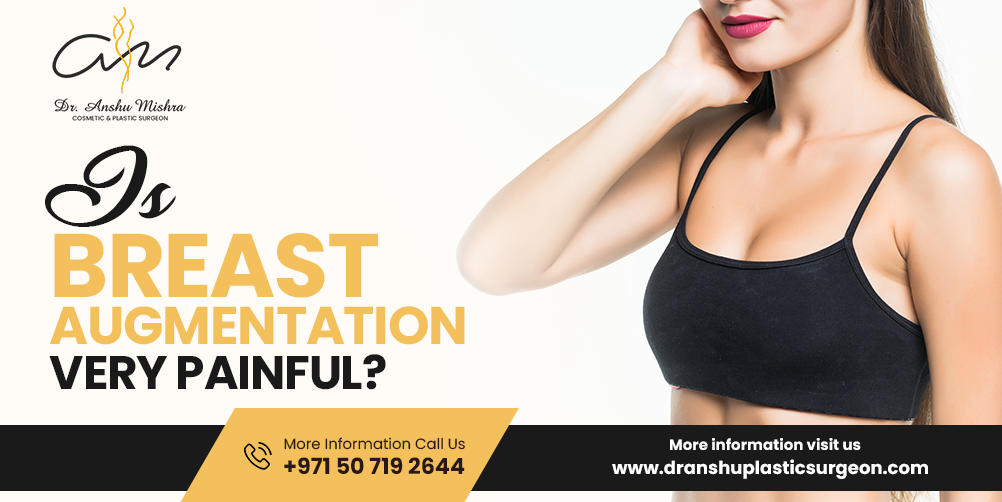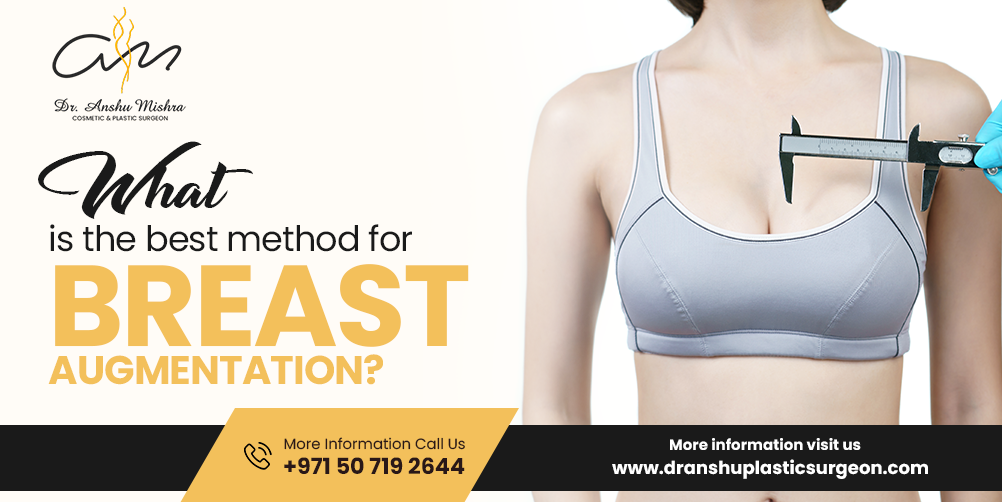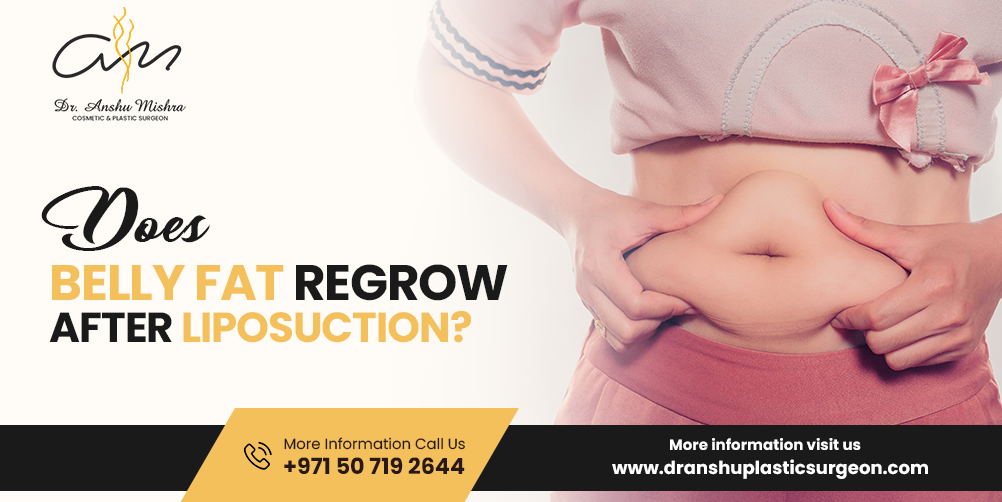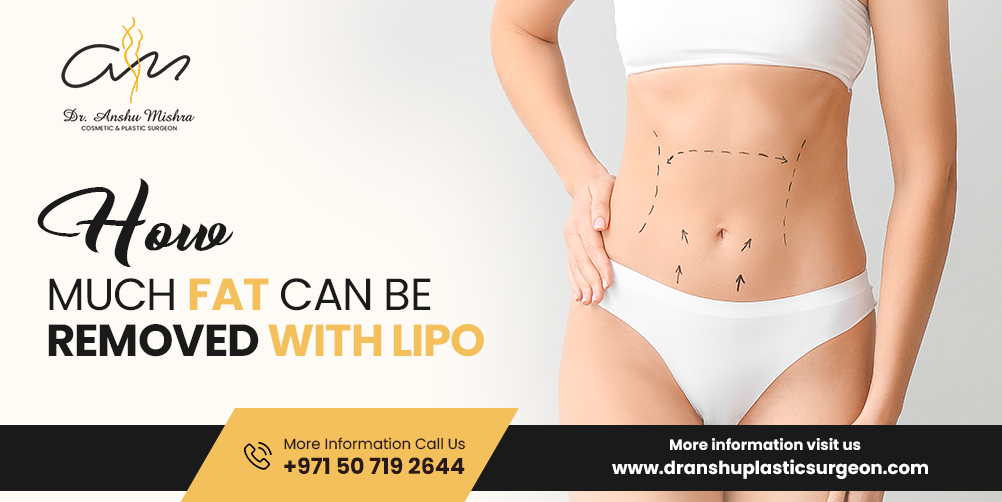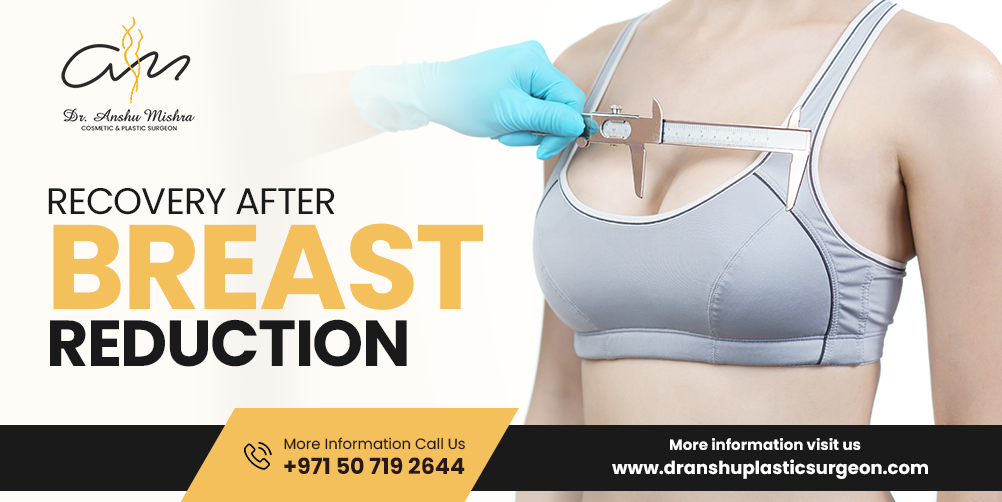Many women think about getting breast augmentation but hesitate due to one major concern—pain. It’s not uncommon to hear people asking, “Is it too painful to handle?” This fear often holds them back from making a choice that could boost their confidence and enhance their appearance.
Pain is subjective—what feels unbearable to one person might be manageable for another. But when it comes to surgery, it helps to know what kind of discomfort to expect and for how long. Is it as painful as people assume, or is it just a temporary phase that can be controlled with the right care? To know about this, consult one of the best plastic surgeons in Dubai, she offers proper care for breast augmentation in Dubai.
This blog will give you a clear understanding of the pain levels involved in breast augmentation, how long it lasts, and what can be done to make recovery smoother. If you’re considering this procedure but are unsure because of pain concerns, this guide will help you make sense of the reality of the post-surgery experience.
Table of Contents
ToggleWhat is Breast Augmentation Surgery?
Before discussing pain levels, it’s important to understand what breast augmentation involves. Breast augmentation, also known as augmentation mammoplasty is performed to enhance the size and shape of the breasts. This procedure is chosen for various reasons, including restoring breast volume lost after weight reduction or pregnancy, achieving a more balanced figure, or improving self-confidence. The process involves making an incision, creating a pocket in the breast tissue, and inserting the chosen implant.
Types of Breast Augmentation Procedures
There are two primary ways to achieve breast augmentation:
- Breast Implants – Silicone or saline implants are placed under the breast tissue or chest muscle to increase volume.
- Fat Transfer Augmentation – Fat is taken from another part of the body through liposuction and injected into the breasts.
The type of procedure you choose can impact the level of discomfort you experience.
Is the Surgery Itself Painful?
No, the surgery itself is not painful because it is performed under general anesthesia (which puts you to sleep). You won’t feel a thing during the surgery, which typically lasts between one to two hours, depending on the complexity of the procedure and the technique used. Once the anesthesia takes effect, you won’t be aware of anything happening. The real concern is the discomfort that follows once the anesthesia wears off.
What to Expect Immediately After Surgery?
Once the surgery is complete and the anesthesia wears off, the first few hours are when you may start to feel soreness or tightness in your chest. Since the body is adjusting to the implants, the surrounding muscles and tissues stretch, which can create a feeling of pressure. Some areas of the breast may feel numb or hypersensitive. You will likely have bandages and a surgical bra in place. Some bruising and swelling are normal. In some cases, surgical drains may be placed to help remove excess fluid. These drains can contribute to discomfort. However, these post-surgery sensations gradually improve with proper care and medication.
How Painful is Recovery?
The pain from breast augmentation varies from person to person, but here’s what most women experience:
First 48 Hours: The Most Intense Phase
- The first two days post-surgery are typically when the discomfort is at its peak. Some patients describe it as a feeling of tightness or heaviness rather than sharp pain.
- The chest muscles, especially if the implants are placed under the muscle, may feel sore.
- Pain medications, prescribed by your surgeon, effectively reduce discomfort.
First Week: Gradual Relief
- By the third or fourth day, the soreness starts decreasing, though some movements (like raising your arms) may still cause discomfort.
- Swelling and bruising around the chest are normal but should start subsiding gradually.
- You’ll likely be able to reduce your pain medication.
- Some patients describe a burning or stretching sensation as the skin and muscles adjust.
Two to Four Weeks: Noticeable Improvement
- By the second week, most women feel significantly better. Some can even return to light work if the job doesn’t involve heavy lifting.
- The tightness in the chest reduces, and normal movements become easier.
- Some mild soreness may persist, especially in the evenings after daily activities.
- You might not need any pain medication at all.
Beyond One Month: Almost Back to Normal
- By the fourth to sixth week, pain is usually minimal or completely gone.
- Most patients can return to their normal exercise routines (except heavy chest workouts).
- Occasional mild sensitivity or itching may persist but is temporary.
Factors That Influence Pain Levels
Beyond your personal pain tolerance, several other things influence how much pain you might feel:
- The Type of Implant: The size and shape of the implant (saline or silicone) can all affect the level of discomfort. Larger implants might put more pressure on the surrounding tissues, leading to more soreness.
- Placement of the Implant: Where the implant is placed – either under the muscle (submuscular) or over the muscle (sub-glandular/ subfascial) – can make a difference. Submuscular placement, while often preferred for certain aesthetic outcomes, can initially be more painful as the muscle needs to stretch and accommodate the implant.
- Surgical Technique: Minimally invasive techniques can significantly reduce trauma to the tissues, leading to less pain and a faster recovery.
- Your Overall Health: Your general health and any pre-existing conditions can also play a part. If you’re generally healthy, your body might recover more quickly and you might experience less pain.
- Psychological State: Anxiety and stress can heighten the perception of pain. Managing anxiety before and after surgery can contribute to a smoother recovery.
How to Manage Pain After Breast Augmentation?
Although some discomfort is expected, there are many ways to manage and reduce pain effectively:
Proper Wound Care
Keeping the incision sites clean and dry is essential to prevent infection, which can increase pain. This typically involves gentle cleansing with a prescribed solution or mild soap and water, patting the area dry with a clean towel, and applying any recommended ointments.
Medications
Doctors typically prescribe pain relievers and anti-inflammatory medications to help manage post-surgery discomfort. Painkillers can include:
- Prescription Painkillers – For the first few days, stronger medications may be needed. It’s important to take them as instructed rather than waiting for the pain to become severe.
- Over-the-Counter Pain Relievers – As the pain subsides, over-the-counter medications can be used.
Ice Packs for Swelling
Applying ice packs can reduce swelling and numb the area, providing relief from discomfort. However, it’s important not to place ice directly on the skin (avoiding direct contact with incisions)—wrap it in a soft cloth first.
Lymphatic Massage
Some surgeons recommend gentle lymphatic massage to help reduce swelling and improve healing. Consult with your surgeon or a qualified massage therapist.
Wearing a Surgical Bra
A well-fitted post-surgery bra provides support, reduces swelling, and minimizes movement, which helps in pain management.
Rest and Limited Movement
Rest allows the body to heal faster. It’s essential to avoid strenuous activities, heavy lifting, and excessive arm movement for at least a few weeks. Overexertion can worsen pain and slow down healing.
Sleeping in an Elevated Position
Keeping the upper body elevated helps in reducing swelling and makes sleeping more comfortable in the initial days.
Physical Therapy
Your surgeon may recommend physical therapy to help you regain range of motion and reduce stiffness after surgery.
Gentle Walking
Gentle movement promotes blood circulation, which is essential for healing. It also helps prevent stiffness. Short, gentle walks around your home are encouraged as soon as you feel able.
Hydration and Proper Nutrition
A well-balanced diet with plenty of fluids helps the body heal faster and reduces inflammation, which in turn helps with pain management.
Avoiding Comparison
Remember, everyone’s recovery is different, so it is advisable to not compare yourself to others. Listen to your body and don’t push yourself too hard.
It’s important to have regular check-ups with your surgeon to ensure everything is healing properly and to address any concerns you might have.
Choosing the Right Surgeon
Choosing a qualified and experienced surgeon is one of the most important decisions you’ll make when considering breast augmentation. A skilled surgeon will not only be able to achieve the aesthetic results you desire, but they will also prioritize your safety and well-being.
It’s more than just technical skill; it’s about trust and a shared vision. Look beyond board certification to surgeons with a proven track record specifically in breast augmentation. Don’t just glance at before-and-after photos; study them. Do the results align with your goals? Patient testimonials can offer valuable insights, but prioritize your personal connection. Does the surgeon listen? Do they explain things clearly, addressing your concerns with empathy?
A thorough consultation is key – it’s a two-way street. They assess you, and you assess them. Don’t rush this. Your body, your peace of mind, deserves careful consideration. This isn’t a purchase; it’s a partnership.
Is the Pain Worth It?
Most women who undergo breast augmentation feel that the temporary pain is a small price to pay for long-term confidence and satisfaction. With proper post-operative care and pain management, the recovery period can be made much more comfortable.
Final Thoughts
Breast augmentation is a surgery, and like any medical procedure, it involves some degree of discomfort. However, with modern surgical techniques, medications, and proper post-operative care, the pain is usually very manageable. Most women describe it as more of a pressure or tightness rather than sharp pain.
If you are considering breast augmentation and are concerned about the pain, consulting an experienced surgeon is the best way to get clarity. Dr. Anshu Mishra specializes in breast augmentation and ensures that patients receive the best care throughout their journey.
Ready to take the next step? Book a consultation with Dr. Anshu Mishra today to discuss your options and have all your concerns addressed.


